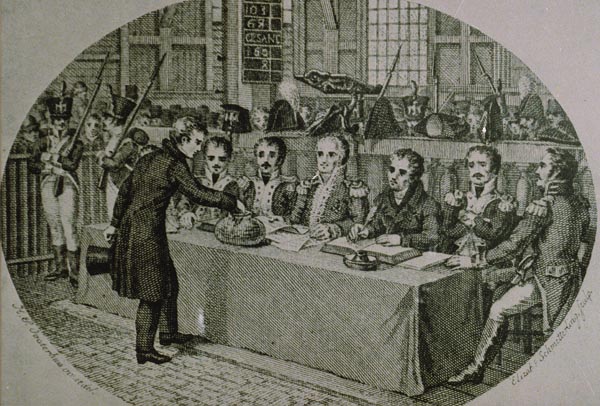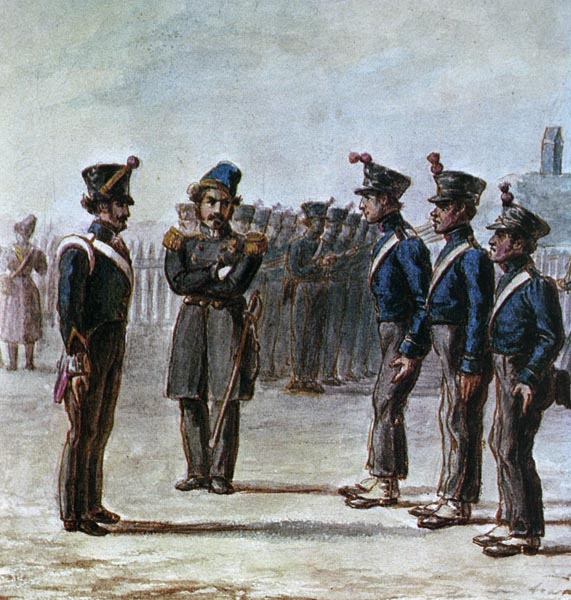
All militia records digitized and indexed online!
“Militia Records” is an umbrella term for the documentation of military service. Military service ("dienstplicht") was introduced to the Netherlands in 1811. Until the French occupation, the army consisted of foreigners, vagrants and adventurers. In 1814 it was ruled that one out of every 100 inhabitants had to be drafted for military service. On February 27, 1815 the first law was passed. Two years later it was replaced by the law establishing a National Guard.
Volunteers alone were not enough to meet the needs of the National Guard, so a draft was instituted. Every male citizen had to register once they reached the age of 19. Each had to sign up for the lottery in the province where his parents resided. A province was divided into militia districts of about 100,000 residents, which were then placed in ten regions. Draws took place according to region.

Someone whose draw was selected could ask for an exemption. For example, exemptions could be granted to someone who was too short (less than 1.55 meters), had a physical defect, or who had one or more brothers already serving (A family with an even number of sons had to have half of them employed. For a family with of an odd number of sons the minority had to be employed) . An exemption could also be granted to someone who was studying theology. In most cases, it was a one year exemption. The following year he had to sign up again. Generally, men who were drafted were required to serve between five and seven years. This was proportional to how long service was required at that time. This is why a person can be found in several militia records for different years.
If there was no basis for an exemption, a replacement was allowed. This could be a “remplaçant” (someone who did not have to register that year) or a "nummerverwisselaar" (someone who was not drawn that year, but traded their number for a lower lottery number). The use of an alternate was costly but common. The replacement system had a major impact on the number of volunteers. A remplaçant earned much more than a military volunteer. As a result, the remplaçant system was abolished in 1898 and replaced by the personal service requirement.

In 1922, conscription replaced the National Guard, and the registration of young men for military service continued. Militia records can be found up to 1941. For privacy reasons, not all of these records are yet released. As a rule, records are not entered into the archives until a minimum of one hundred years has passed since the person’s birth.
The draw for the National Guard had a strict administrative system. In most cases there are duplicate records: a registry entry, two alphabetical lists of names and two lottery registers.
The lottery registers sometimes contain conflicting information. This is mainly due to the method of drawing lots. For each draw, the numbers were matched to the number enrolled. Initially each person had to draw his own lot number, thus determining his own fate. This method was time consuming and subject to mistakes. In 1928, a different lottery system was introduced where only one lot number was drawn. This number was linked to the number on the enrollment register. The remaining lot numbers were then assigned in order of registration.